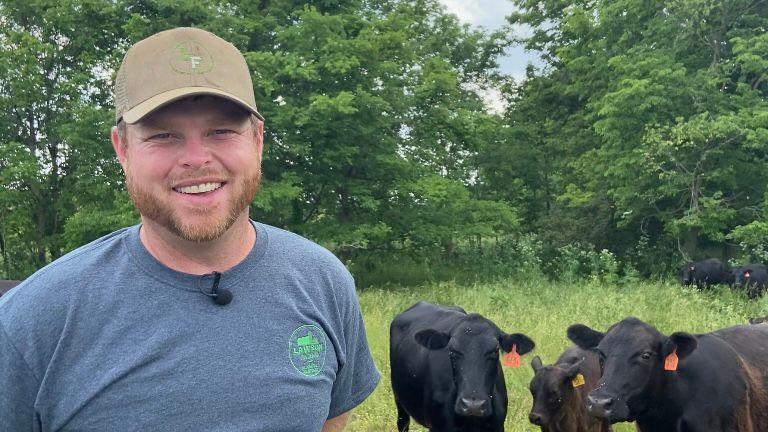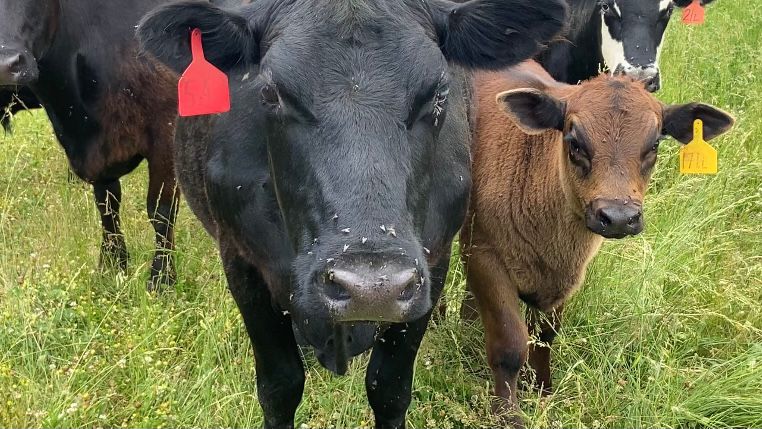SPENCER COUNTY, Ky. — You may notice you’re paying more for beef at the grocery store these days, but Kentucky’s cattle farmers say that doesn’t mean they’re seeing a bigger profit.
What You Need To Know
- Kentucky cattle farmers say the higher cost of corn is the latest challenge they're facing
- Nathan Lawson is director of the Kentucky Beef Council
- Lawson says he is waiting for a better price before he sells some of his calves
- Kentucky is home to 38,000 beef producers

Nathan Lawson and his family raise cattle on about 500 acres on Lawson Family Farms in Spencer County.
Lawson has cattle in all stages of growth, including calves born this spring that are feeding on grass and milk from their mothers, weaned calves born last fall, and calves a little more than a year old, called "yearlings."
“At this point in the life cycle of these calves, we typically make a marketing decision about how many of them will be sold through our stockyards or off the farm to cattle buyers and how many we will keep back," said Lawson, standing in a pasture filled with yearlings.
Once they’re sold, they’ll gain more weight in a feed lot, likely outside Kentucky on a corn-heavy diet, but higher corn prices are hurting the industry, Lawson told Spectrum News 1.
“The increased cost in corn has really driven the livestock markets down, particularly the cattle market down because as you head west with these calves out of Kentucky that are in that 800-900 pound range, they’re going into a feeding situation where the bulk of their diet is going to be a corn-based ration and so the cost associated with that has made buyers very hesitant."
It's been a challenging year for Kentucky’s 38,000 beef producers, said Lawson, who is the director of the Kentucky Beef Council.
“COVID put some constraints on our cattle markets because of the inability for the processers to really run at capacity due to COVID shutdowns in 2020," he said. "And we fast forward to 2021...we’re seeing continued constraints in the processing sector due to the lack of labor availability.”

For now, he’s waiting to sell the yearlings, hoping for a better price.
"To our consumers, we really want you to be able to understand that increased prices for you at the meat case doesn’t necessarily trickle down to profits for your farmers and ranchers."
Meanwhile, late last month, Sen. Mike Rounds (R-S.D.) and Sen. Tina Smith (D-Minn.) asked the Department of Justice to look at fairness in the meat packing industry. They wrote in a letter:
"In the last several years, the price of live cattle in the United States market has plummeted, while the price of boxed beef has significantly increased, raising consumer prices at the grocery store. Concurrently, the major packing companies realized significant profits, while both U.S. beef consumers and independent cattle producers paid the price."
The North American Meat Institute, which represents meat processors, said its members and their “livestock suppliers benefit from a fair and competitive market” and that “cattle prices are where they are because they follow supply and demand.”



